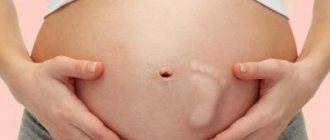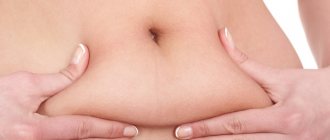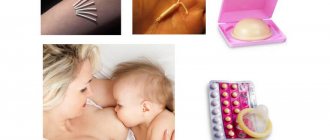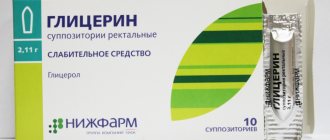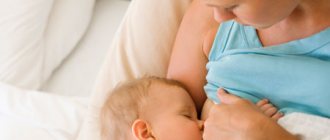Why do they need stitches?
Perineotomy is an operation that protects the mother and helps the baby to be born. In the second stage of labor, excessive stretching of the perineal tissue may occur, and there is a threat of its rupture. This happens in the following cases:
- high crotch;
- inflexibility of tissues in women giving birth for the first time after 30 years;
- scars from previous births;
- the position of the child during childbirth, when he faces the perineum with his forehead or face (extensor presentation);
- use of obstetric forceps or vacuum extraction of the fetus;
- narrow pelvis;
- large fruit;
- rapid labor;
- premature eruption of the head due to improper management of labor by a midwife.
A cut with straight edges heals better than a tear. Therefore, a dissection of the perineum is performed, followed by suturing after the birth of the child. The wound is sutured to speed up its healing.
Precautions in behavior after the incision
The length of the tissue dissection is about 2–3 cm; after suturing, the incision heals quickly. To prevent this process from slowing down and becoming more complicated, a young mother should take some precautions:
- on the first day after birth you should only lie down;
- standing and walking are allowed from the second day, for example, a woman must eat at a special high table, which is in the dining room of the maternity hospital;
- you can sit only 3 days after the stitches are removed or 2 weeks after giving birth, first on chairs and then on a soft bed or sofa;
- The newborn should be fed while lying on the bed;
- properly care for the perineum;
- avoid constipation;
- wear cotton underwear that is not tight.
When are stitches removed after childbirth? This usually happens a week or less after the baby is born. Thus, a woman should be careful in the first 14 days of the postpartum period.
How to treat and care for stitches after childbirth
During the first days in the maternity hospital, midwives handle the sutures. 2 times a day they treat the seams with a solution of brilliant green or potassium permanganate. You will continue processing at home. This will need to be done after each water procedure.
This is how external seams are treated. Internal seams do not require special care, provided that you do not have any infectious diseases. And this needs to be taken care of even before pregnancy.
In the first days after childbirth, when stitches were placed, you need to be careful with bowel movements so as not to overstrain the fused tissues. Ideally, at the first urge to ask for an enema or glycerin suppository.
After every trip to the toilet you should wash yourself. In the morning and evening you can use the intimate hygiene product. It is better to wash yourself in the shower, rather than in a basin of water. The sanitary pad needs to be changed every 2 hours. Even if you think it can still serve.
A good option for underwear would be disposable panties, which are made of breathable material. If there are none, then use cotton clothes. Do not put on underwear immediately after showering.
Air baths are good not only for children's skin, but also for your healing wounds. You should not rub the seams with a towel; it is better to blot them or wait until they dry completely.
Shapewear should not be used. The tightening effect cuts off blood flow and interferes with healing. Yes, you want to look good immediately after the baby is born, but wait a couple of months, and then you will be able to wear both a corset and panties.
And the most important. When applying postpartum sutures, you will not be able to sit for about 10 days - this is at least. After this period, if the stitches heal without complications, you can begin to sit on a hard surface. You need to rest while the sutures are healing while lying down or half-sitting. You cannot make sudden movements.
Previously, when newborns were separated from their mothers, those who had postpartum stitches were not allowed to get up until discharge. This allowed the sutures to heal much faster. Now, when children are with their mothers in the ward, bed rest is impossible. Therefore, you need to follow the recommendations regarding sitting as much as possible so that the seams do not come apart or become inflamed.
Proper care of intimate areas and stitches
How to treat sutures on the perineum after childbirth? The use of special antiseptics is not required. After visiting the toilet, a woman should wash herself with warm boiled water from the perineum to the anus and dry the skin with a clean cloth or paper towel. After washing, it is recommended to lie on the bed for a while without a pad so that the seam area dries well.
If you follow these simple tips, an incision in the perineum is not dangerous. After it, only a small scar remains. If a cosmetic suture was applied, then traces of it are practically invisible.
The use of medications to care for sutures is required if healing is slow or complications develop. These medications must be prescribed by a doctor. Usually they use treatment with chlorhexidine, hydrogen peroxide, less often they recommend ointments - “Levomekol”, “Vishnevsky Ointment”, “Solcoseryl”, products with panthenol.
Painful stitches after childbirth
After giving birth, a woman may experience pain in the suture area for about a month. Besides the fact that the healing process is still ongoing, there are several reasons that can cause pain. Constipation can cause pain in the stitches in the perineum. Very often in the first month women face this problem. These days, lactation begins, which requires a lot of fluid, which the young mother drinks. For normal digestion and bowel movements, there may simply not be enough fluid in the body. Try to drink more water or green tea or herbal infusions these days to cope with this problem. Another reason may be the heavy lifting of a woman. Lifting heavy objects should be limited, and after a cesarean section, a woman can lift no more than the weight of a newborn baby.
Sometimes after childbirth it becomes necessary to put stitches on the perineum of the mother in labor. The reason for this may be narrow birth canals, a large fetus, the presence of a scar after a previous birth and poor tissue elasticity. After such manipulation, a woman must be very careful, because at the slightest non-compliance with medical recommendations, her wound may open again. Let's take a closer look at what needs to be done if a seam breaks after childbirth and how to prevent this.
Exercises for speedy recovery
To speed up tissue restoration, you can perform special gymnastics. It should be remembered that before the sutures are removed, you cannot perform exercises with abduction (breeding) of the legs.
In the first two days, the exercises are performed while lying in bed. They include bending the legs at the ankle joints, and then at the knee joints. Subsequently, lifting the pelvis with support on bent legs is added. Breathing exercises are also useful. Class duration is 15 minutes.
On subsequent days, gymnastics is performed standing and its duration increases to 20 minutes. Turns and shallow bends of the body, standing on tiptoes, and light squats are added. Periodic contraction of the anal sphincter throughout the day and attempts to temporarily stop the stream of urine during urination are indicated. Such exercises help restore blood supply to tissues and speed up healing.
Causes of seam divergence
Some women still experience suture dehiscence after suturing the perineal incision. The reason for this is the woman’s failure to comply with the recommendations for the regimen:
- getting out of bed early;
- sitting for a long time during the first week after birth;
- intense physical activity or sudden movements;
- incorrectly performed exercises during gymnastics.
In addition, the sutures also come apart if the postoperative wound becomes infected.
Methods for correcting abnormal skin fusion
The perineum is usually sutured with two rows of sutures: the first is placed on the muscles, and the second on the skin. If only the superficial suture has come apart, measures are taken to prevent infection (treatment with chlorhexidine, hydrogen peroxide, brilliant green and other antiseptics); re-suturing is not performed.
If there is a slight divergence of the sutures, it is usually recommended to apply “Vishnevsky Ointment” or “Levomekol” to the damaged area. After a couple of weeks the wound heals.
If there is significant deformation remaining after the deep suture has ruptured, then plastic surgery of the perineal tissue is indicated.
So, sutures are placed on the perineum after childbirth to speed up the healing of the tissue incision. If the woman follows the rules of care and takes good care of her health, her well-being quickly returns to normal. If disturbing symptoms appear, you should seek help from a gynecologist.
In this case, experts recommend that patients use a laxative after childbirth with stitches in the perineum.
What diseases can await a young mother after childbirth? . Inflammation in the area of postpartum sutures. Difficult or rapid labor, especially.
The suture should turn into a scar by the 6th month after birth. That is, an independent process also takes place at the site of the incision.
Some women insist on it, fearing the pain associated with normal childbirth. But when everything is over, both of them may discover that the seam is festering afterwards.
Stitches after childbirth are a common and very unpleasant occurrence. Every third woman is faced with this problem and, having heard from experienced friends about the danger of seams coming apart, in a panic she searches for information on how to protect herself from such a situation.
There are several mandatory rules for caring for postpartum scars, but first you need to understand what stitches are and in what cases they are applied to a woman in labor.
- Stitches after caesarean section. Everything here is self-explanatory. Stitches are required. The size of the surgical incision is about 12 cm, and it is made in the area of the lower segment of the uterus.
- Sutures on the cervix. They are applied when the uterine tissue ruptures during natural childbirth, and the rupture occurs due to insufficient dilatation of the cervix and premature expulsion of the fetus, in which the head puts pressure on the cervix, causing it to rupture.
- Stitches in the vagina. The walls of the vagina are torn in the same cases as the cervix.
- Stitches on the crotch. Perineal ruptures are the most common, there are several types and occur in different situations: rapid labor, premature birth, breech presentation of the fetus, etc. The posterior commissure of the vagina (grade 1 rupture), the skin and muscles of the pelvic floor (grade 2) and the skin, muscles and walls of the rectum (grade 3) can rupture. Perineal ruptures can also be artificial: the perineum is cut with a special instrument along the midline from the posterior commissure of the vagina to the anus.
There are several suture techniques. Recently, sutures borrowed from cosmetology have been increasingly used. After healing they are completely invisible. However, regardless of the application technique, sutures require the same quality care. The only difference between seams is the material with which they are made. If sutures are applied with non-absorbable threads, they should be removed after 2-5 days. But self-absorbable material does not require such a procedure. The most commonly used are cadgut, vicryl and maxon. These threads completely dissolve without repeated medical intervention, that is, such sutures are not removed.
Features of caring for seams on the perineum
If there is a seam on the perineum, the sanitary pad should be changed every 2-3 hours. After visiting the toilet, it is advisable to wash yourself with a running stream of water in the direction from the pubis, and then blot the seam with a napkin or towel. The best option for underwear is cotton panties that allow air to pass through and do not damage the seams, or “breathable” disposable panties.
After applying a suture to the perineum, you cannot sit for at least a week and a half - even when leaving the maternity hospital you will have to recline. You can feed and change the baby, eat food, and do some housework while standing or lying down. After 10 days, you can begin to carefully sit down on a hard surface or a special inflatable ring, and only after a month can you sit down normally.
How to treat sutures after childbirth at home for a woman whose childbirth was accompanied by some complications? How long does it take for sutures to heal after childbirth during elective surgery?
In a maternity hospital, the treatment of sutures after childbirth falls entirely on the medical staff. Nurses perform the required manipulations themselves. How should a woman care for her stitches after discharge from a medical facility and how should she treat them?
Childbirth is a natural process. But not all women experience it without consequences. Almost every fourth woman is faced with the fact that after the birth of her baby she has to care not only for him, but also for her own stitches. Where do they come from?
Sutures are placed during cesarean section, for cervical ruptures, vaginal tears and perineal ruptures. Sometimes obstetricians cut the perineum specifically to make it easier for the baby to pass through the birth canal. In order for sutures to heal faster after childbirth, they must be carefully looked after.
If a woman is prepared for a caesarean section in advance, and the expectant mother is warned about the problems that will arise after the operation, then it is impossible to prepare in advance for ruptures during childbirth. Why do they arise?
Ruptures in the cervix occur if pushing begins before the cervix is fully dilated.
Injuries to the perineum - during rapid and premature birth, pelvic attachment of the child, due to the peculiarities of the individual anatomical structure.
Obstetricians make perineal incisions when a woman cannot push for health reasons or when there is a threat of spontaneous rupture of the perineum.
The treatment of sutures after childbirth in the maternity hospital falls on the medical staff.
Those women who have undergone surgery - caesarean section - are given dressings daily. During them, the suture is examined, the resulting fistulas are removed, and purulent contents are removed, if they appear. At this stage of medical development, the external suture is finally formed by the fifth day. If a non-self-absorbable material is applied, the sutures are removed at this stage. A woman can treat a protracted scar on her own without visiting a medical facility to get a dressing done. By the end of the second week, tight dressing is no longer required.
The healing of sutures after childbirth depends on the individual reaction of the body. Some women have to bandage the external suture for up to 2 weeks after a cesarean section, while others remove the dressing after a week and treat the suture with brilliant green.
How to treat sutures after childbirth on the cervix or for vaginal ruptures? In the maternity hospital, nurses carry out hygienic procedures, washing the tears with a weak solution of manganese or lubricating them with brilliant green if the seam is within reach. By the time of discharge from the hospital, the woman usually does not bother with such stitches. For their rapid healing, she will only have to maintain personal hygiene and not overexert herself: do not carry heavy objects, observe sexual rest for 2 months. After 2 weeks, such sutures, subject to the above conditions, heal. The self-absorbable material used for these tears disappears after 3 months.
With perineal ruptures, the sutures are more painful and heal slowly. If the incisions in the perineal area were made by an obstetrician, then such sutures are tightened faster due to the smooth edges. The suture material is removed after 5 days, but the woman is only allowed to sit on the 10th day. While a woman is in the maternity hospital, she does not need to think about how to treat the stitches after childbirth. The manipulations are carried out by a nurse, treating the wounds with potassium permanganate, brilliant green or furatsilin twice a day.
At home, the woman has to take care of the stitches herself. If you do not protect the seam from bacteria, then it will remind you of itself for a long time. Ensuring sterility in the perineal area is quite difficult. To do this, you need to change pads every hour and a half, wash yourself when changing them and after visiting the toilet, wear loose cotton underwear and treat the seams with an antiseptic.
A woman selects an antiseptic for herself at home, analyzing the sensations caused by the medicine. Zelenka, malavit, solcoseryl, chlorhexedine, levimikol, sea buckthorn oil or chlorophyllip can be used as an antiseptic drug. Subsequently, special ointments for scars may be needed.
Swelling of the wound or purulent discharge from it indicates that the healing of the sutures after childbirth has slowed down due to complications that have arisen. After consulting a doctor, most likely the seams will have to be treated with Vishnevsky ointment or syntomycin emulsion.
Proper treatment of sutures after childbirth helps a woman recover faster and return to a normal active life. Neglecting personal hygiene at this stage is unacceptable. Festering sutures can cause a serious complication in a woman - sepsis.
Very often, at the time of childbirth, a woman suffers ruptures or doctors have to make incisions in her genital tract, which are subsequently closed with external or external sutures. If obstetricians do not notice the ruptures and do not stitch them up, this can lead to adverse consequences for the health of the mother in labor. may end up back in the hospital due to bleeding and infection.
How to treat stitches after childbirth?
Stitches in the vagina and cervix, as a rule, practically do not bother a woman and do not require special care. You just need to follow the rules of personal hygiene and not lift heavy objects. Such sutures are applied with threads, which dissolve on their own within a few weeks. Scars heal painlessly and quite quickly.
Sutures after cesarean section require special attention. In the first days after surgery, they are cared for by a nurse. The postoperative suture is treated daily with antiseptic solutions and a sterile bandage is applied. After a week, the non-absorbable threads are removed, but the treatment procedures continue.
Women often complain that the pain from stitches in the perineum does not go away for a long time, and the stitches heal poorly. This requires some patience, but processing is extremely important. Different drugs are suitable for different women. Obstetricians in maternity hospitals treat stitches on the perineum, usually with brilliant green. At home, it is recommended to try Levomekol ointment, Bepanten, Malavit gel, Solcoseryl, Chlorhexidine, sea buckthorn oil, Chlorophyllipt. It should be taken into account that not all remedies are equally good: many women, for example, note increased pain when using Levomekol, and therefore you need to try, select and endure - time also heals in this case. Meanwhile, don’t forget about hygiene.
How to care for a postpartum suture?
Internal seams do not require special care. The internal suture after a cesarean section is covered with skin and does not come into contact with the environment. And with sutures on the cervix and vagina, it is necessary to promptly empty the bladder and bowels, maintain intimate hygiene and not lift weights. In most cases, these sutures are applied with absorbable sutures and do not require removal, but heal and scar on their own.
External seams are in contact with the environment, so there is a risk of infection, and such seams require careful care.
The suture after a caesarean section is looked after by medical staff for the first few days while the woman is in the maternity hospital. The suture is treated daily with an antiseptic and a sterile bandage is applied. On average, the sutures are removed after a week, after which treatment is continued until complete healing.
The woman is very worried about the stitches on the perineum. It is impossible to apply an aseptic bandage to these sutures; these sutures make themselves felt with any emptying and require very careful care. After each urination and defecation, you must wash yourself with running water at room temperature without soap.
Twice a day, morning and evening, wash the seams with soap, but do not rub them with a washcloth. Then dry the skin in the seam area using blotting movements. It is best to use disposable paper towels for this. But you can get a towel only for the crotch, and change it every day. After water treatments, do not rush to put on underwear; air baths promote tissue regeneration.
You cannot wear synthetic underwear - only cotton, or special disposable underwear is a good option. You should not wear shapewear; it interferes with proper blood flow, which is necessary for the healing of the seam. It is necessary to change the gasket at least once every 2 hours, even if it is not full, microorganisms simply multiply in it.
These sutures do not need to be treated with antiseptics and antibiotic ointments without indications; they are used only when the suture is suppurated. For care, you can use products that promote rapid tissue regeneration, but do not contain an antiseptic or antibacterial component: bepanten, sea buckthorn oil, etc. When suppuration occurs, the suture is treated with antiseptics (brilliant green solution, chlorophyllipt, chlorhexidine, etc.) and ointments with antibiotics (levomekol, oflocaine, etc.). But if the suture becomes infected and inflamed, it is necessary to be examined by a doctor, since inadequate treatment can lead to complications in the form of inflammation of the internal genital organs.
To quickly regenerate the suture, it is recommended to perform exercises aimed at improving blood flow in the pelvis. This requires contraction of the pelvic floor muscles. The most effective is to interrupt the urine stream when urinating.
If a dense, inelastic scar is formed, the doctor may prescribe special absorbable ointments that are applied daily to the scar area for several months.
When are stitches needed?
If the birth took place through the natural birth canal, then the sutures are the result of the restoration of the soft tissues of the cervix, vagina, and perineum. Let us recall the reasons that could lead to the need for sutures.
Cervical ruptures
most often arise in a situation when the cervix has not yet fully opened, and the woman begins to push. The head puts pressure on the cervix, and the latter ruptures.
Perineal incision
may appear for the following reasons:
- quick birth
- in this case, the fetal head experiences significant stress, so doctors make it easier for the baby to pass through the perineum: this is necessary in order to reduce the likelihood of injuries to the baby’s head; - premature birth
- dissection of the perineum pursues the same goals as during rapid birth; - the baby is born in a breech position
- the tissues of the perineum are cut so that there are no obstacles during the birth of the head; - with anatomical features of the woman’s perineum
(the tissues are inelastic or there is a scar from a previous birth), due to which the baby’s head cannot be born normally; - the expectant mother should not push
due to severe myopia or for any other reasons; - there are signs of a threat of rupture of the perineum
- in this case it is better to make an incision, since the edges of a wound made with scissors heal better than the edges of a wound formed as a result of a rupture.
If the baby was born by caesarean section
, then the young mother has a postoperative suture on the anterior abdominal wall.
Various materials are used to apply sutures to the perineum and anterior abdominal wall. The choice of a doctor depends on the indications, available capabilities, techniques adopted in a given medical institution, and other circumstances. Thus, synthetic or natural self-absorbable suture material, non-absorbable suture material or metal staples can be used. The last two types of suture materials are removed on the 4-6th day after birth.
Now that we have remembered why seams may appear, let's talk about how to care for them. If there is a stitch, the young mother must be fully prepared and know how to behave so that the rehabilitation period goes as smoothly as possible and does not leave any unpleasant consequences.
Caring for stitches after childbirth
During childbirth, situations often arise when it is necessary to apply stitches. Their presence requires increased caution from the young mother and, of course, certain skills in caring for this temporary “risk zone.”
When are stitches needed?
If the birth took place through the natural birth canal, then the sutures
– this is the result of restoration of the soft tissues of the cervix, vagina, and perineum.
Let us recall the reasons that could lead to the need for sutures
.
Cervical ruptures
most often arise in a situation when the cervix has not yet fully opened, and the woman begins to push. The head puts pressure on the cervix, and the latter ruptures.
Perineal incision
may appear for the following reasons:
- quick birth - in this case, the fetal head experiences significant stress, so doctors make it easier for the baby to pass through the perineum: this is necessary in order to reduce the likelihood of injuries to the baby’s head;
- premature birth - dissection of the perineum pursues the same goals as during rapid birth;
- the baby is born in a breech position - the tissues of the perineum are cut so that there are no obstacles during the birth of the head;
- with anatomical features of the woman’s perineum (the tissues are inelastic or there is a scar from a previous birth), due to which the baby’s head cannot be born normally;
- the expectant mother should not push due to severe myopia or for any other reasons;
- there are signs of a threat of rupture of the perineum - in this case it is better to make an incision, since the edges of a wound made with scissors heal better than the edges of a wound formed as a result of a rupture.
If the baby was born by caesarean section
, then the young mother has a postoperative
suture
on the anterior abdominal wall.
For suturing the perineum
and the anterior abdominal wall use different materials.
The choice of a doctor depends on the indications, available capabilities, techniques adopted in a given medical institution, and other circumstances. Thus, synthetic or natural self-absorbable suture material, non-absorbable suture material or metal staples can be used. The last two types of suture
materials are removed on the 4-6th day after birth.
Now that we have remembered why stitches
, let's talk about how to care for them.
If there is a stitch,
the young mother must be fully prepared and know how to behave so that the rehabilitation period goes as smoothly as possible and does not leave any unpleasant consequences.
Stitches on the crotch
Healing of small wounds and stitches
occurs within 2 weeks - 1 month
after birth
, deeper injuries take much longer to heal.
During the postpartum period, it is necessary to take all precautions so that an infection does not develop at the site of the sutures
, which can then enter the birth canal. Proper care of the damaged perineum will reduce pain and speed up wound healing.
For seam care
On the cervix and vaginal walls, it is enough to follow the rules of hygiene; no additional care is required. These sutures are always placed with absorbable material, so they are not removed.
In the maternity hospital there are stitches on the perineum
processed by the midwife of the department 1-2 times a day. To do this, she uses brilliant green or a concentrated solution of potassium permanganate.
Stitches on the crotch
, as a rule, are also applied with self-absorbing threads.
The nodules disappear on the 3-4th day - on the last day of stay in the maternity hospital or in the first days at home. If the suture
was made with non-absorbable material,
the sutures
are also removed on the 3-4th day.
Caring for seams
In the perineum, maintaining personal hygiene rules also plays an important role. Every two hours it is necessary to change the pad or diaper, regardless of its filling. You should only use loose cotton underwear or special disposable panties.
The use of shapewear is strictly prohibited, as it puts significant pressure on the perineum, which impairs blood circulation, preventing healing.
It is also necessary to wash your face every two hours (after each visit to the toilet; you need to go to the toilet with such frequency so that a full bladder does not interfere with the contraction of the uterus).
In the morning and evening, when you take a shower, the perineum should be washed with soap, and during the day you can simply wash it with water. Wash the crotch seam
you need to do it quite carefully - you can simply direct a stream of water at it. After washing, you need to dry the perineum and the area of the seams by blotting the towel from front to back.
If there are seams on the perineum
a woman is not allowed to sit for 7-14 days (depending on the degree of damage). At the same time, you can sit on the toilet already on the first day after birth. Speaking of the toilet, many women are afraid of severe pain and try to skip bowel movements, as a result, the load on the perineal muscles increases and the pain intensifies.
As a rule, in the first day or two after childbirth, there is no stool if you have properly prepared for childbirth, and also because the woman was given a cleansing enema before giving birth, and during childbirth the woman in labor does not eat. Stool appears on the 2-3rd day. To avoid constipation after childbirth, avoid eating foods that have a constipating effect. If the problem of constipation is not new to you, drink a tablespoon of vegetable oil before each meal. The stool will be soft and will not affect the healing process of the sutures.
.
In the vast majority of cases, it is recommended to sit on the 5-7th day after birth - on the buttock opposite the side of the injury. You need to sit on a hard surface. On the 10-14th day you can sit on both buttocks. Presence of seams
on the perineum must be taken into account when traveling home from the maternity hospital: it will be convenient for the young mother to lie or half-sit in the back seat of the car. It’s good if the baby sits comfortably in his personal car seat and does not occupy his mother’s hands.
It happens that the sutures
The scars still cause discomfort and pain. They can be treated with heating, but not earlier than two weeks after birth, when the uterus has already contracted. To do this, use “blue”, infrared or quartz lamps. The procedure should be carried out for 5-10 minutes from a distance of at least 50 cm, but if a woman has sensitive white skin, it should be increased to a meter to avoid burns. This procedure can be done independently at home after consulting a doctor or in a physical therapy room.
If a woman feels discomfort at the site of a formed scar, or the scar is rough, then to eliminate these phenomena the doctor may recommend Contractubex ointment - it should be applied 2 times a day for several weeks. With the help of this ointment, it will be possible to reduce the volume of scar tissue formed and reduce discomfort in the scar area.
Sutures after caesarean section
After a caesarean section behind stitches
observed especially carefully. For 5-7 days after the operation (before removing the sutures or staples), the procedural nurse of the postpartum department daily treats the postoperative suture with antiseptic solutions (for example, brilliant green) and changes the bandage.
On the 5-7th day, stitches
and the bandage is removed.
If the wound was sutured with absorbable suture material (such material is used when applying a so-called cosmetic suture), then the wound is treated in the same way, but the sutures
are removed (such threads are completely absorbed on the 65-80th day after surgery).
The skin scar forms approximately on the 7th day after surgery; therefore, already a week after cesarean section
You can shower completely calmly.
Just don’t rub the seam
with a washcloth - this can only be done in another week.
Caesarean section operation
- This is a fairly serious surgical intervention in which the incision passes through all layers of the anterior abdominal wall. Therefore, of course, a young mother is worried about pain in the area of surgical intervention.
In the first 2-3 days, painkillers, which are administered to the woman intramuscularly, help to cope with painful sensations. But from the first days, to reduce pain, the mother is recommended to wear a special postpartum bandage or tie up her stomach with a diaper.
After caesarean section
Young mothers often have a question: will
the seam
if you take the baby in your arms?
Indeed, after abdominal operations, surgeons do not allow their patients to lift more than 2 kg for 2 months. But how can you say this to a woman who has to take care of a baby? Therefore, obstetricians do not recommend that parents after a cesarean section
lift more than 3-4 kg during the first time (2-3 months), that is, more than the weight of the child.
Possible complications
If in the area of the seam on the crotch
or the anterior abdominal wall there is pain, redness, discharge from the wound appears: bloody, purulent or some other - then this indicates the occurrence of inflammatory complications - suppuration of the sutures or dehiscence. In this case, you need to consult a doctor.
Depending on the severity of the condition, the doctor will prescribe local treatment for the woman. In the presence of purulent-inflammatory complications, this can be Vishnevsky ointment or Synthomycin emulsion (they are used for several days), then, when the wound is cleared of pus and begins to heal, Levomekol is prescribed, which promotes wound healing.
Once again, I would like to emphasize that treatment of complications should only take place under the guidance of a doctor. Possibly for seam
A midwife will come to the patient’s home, and maybe the young mother herself will have to go to the antenatal clinic, where the procedure will be performed.
Exercises for healing stitches
To speed up the healing process, whenever possible, you should try to tense your pelvic floor muscles to increase blood flow. An example of such an exercise: contract the muscles around the vagina upward and inward as if you need to stop the flow of urine. Maintain this position for a count of 6. Relax. Such exercises can be repeated several times a day, alternating tension and relaxation 5-8 times.
Stitches on the crotch
Healing of small wounds and sutures occurs within 2 weeks - 1 month after birth, deeper injuries take much longer to heal. During the postpartum period, it is necessary to take all precautions so that an infection does not develop at the site of the sutures, which can then enter the birth canal. Proper care of the damaged perineum will reduce pain and speed up wound healing.
For caring for sutures on the cervix
and the walls of the vagina, all you need to do is follow the rules of hygiene; no additional care is required. These sutures are always placed with absorbable material, so they are not removed.
In the maternity hospital there are stitches on the perineum
processed by the midwife of the department 1-2 times a day. To do this, she uses brilliant green or a concentrated solution of potassium permanganate.
Sutures on the perineum, as a rule, are also applied with self-absorbing threads. The nodules disappear on the 3-4th day - on the last day of stay in the maternity hospital or in the first days at home. If the suture was made with non-absorbable material, the sutures are also removed on the 3-4th day.
Compliance with the rules of personal hygiene also plays an important role in caring for sutures on the perineum. Every two hours it is necessary to change the pad or diaper, regardless of its filling. You should only use loose cotton underwear or special disposable panties. The use of shapewear is strictly prohibited, as it puts significant pressure on the perineum, which impairs blood circulation, preventing healing.
It is also necessary to wash yourself every 2 hours (after each visit to the toilet; you need to go to the toilet at such a frequency that a full bladder does not interfere with the contraction of the uterus). In the morning and evening, when you take a shower, the perineum should be washed with soap, and during the day you can simply wash it with water. You need to wash the seam on the crotch quite thoroughly - you can simply direct a stream of water at it. After washing, you need to dry the perineum and the area of the seams by blotting the towel from front to back.
If there are stitches on the perineum, the woman is not allowed to sit for 7-14 days (depending on the degree of damage). At the same time, you can sit on the toilet already on the first day after birth. By the way, about the toilet. Many women are afraid of severe pain and try to skip bowel movements; as a result, the load on the perineal muscles increases and the pain intensifies. As a rule, in the first day or two after childbirth, there is no stool due to the fact that the woman was given a cleansing enema before giving birth, and during childbirth the woman in labor does not eat. Stool appears on the 2-3rd day. To avoid constipation after childbirth, avoid eating foods that have a constipating effect. If the problem of constipation is not new to you, drink a tablespoon of vegetable oil before each meal. The stool will be soft and will not affect the healing process of the sutures.
How to care?
There are the following basic recommendations for caring for sutures after childbirth:
- The damaged area must be kept clean and dry . This is one of the basic rules of hygiene after childbirth. To wash them, you just need to spray them with water several times a day and carefully wipe them dry.
- to wash yourself after every visit to the toilet.
- to wipe the perineum gently, starting from the front area and moving to the back. This helps avoid the possibility of infection.
- only needs , any physical activity should be minimal. It is prohibited to sit on the buttocks with internal and external seams. It's better to lie on your side.
- You should do pelvic floor exercises as often as possible. This increases blood flow to the groin area and subsequently stimulates healing.
- You need to regularly change sanitary pads , making sure that they do not rub the area with seams.
- While the stitch is healing, you should eat plenty of fiber and drink plenty of water to avoid constipation and straining when going to the toilet.
- A woman should pay attention to the amount of discharge . If, in her opinion, it exceeds the norm, it is necessary to contact a gynecologist.
- To maintain cleanliness, you can use special disposable panties .
- The main way to speed up healing is to treat sutures after childbirth . An antiseptic, hydrogen peroxide or a special cream (for example, Levomekol or Bepanten) are perfect for this procedure.
- If the sutures come apart after childbirth, you should immediately consult a gynecologist . This must not be postponed under any circumstances.
- Cold temperatures relieve pain and reduce swelling in the groin area, so you can take a shallow bath with cool water. This procedure should not take much time and after it it is necessary to wipe the perineum dry.
- If urination is painful, you can take a warm shower or run warm running water over the perineal area to relieve discomfort.
- sex painful for the first few months . If this is the case, you cannot tolerate it under any circumstances, you should talk to your partner and let him know that you need to recover first.
Sutures after caesarean section
After a caesarean section, the sutures are monitored especially carefully. For 5-7 days after the operation (before removing the sutures or staples), the procedural nurse of the postpartum department daily treats the postoperative suture with antiseptic solutions (for example, brilliant green) and changes the bandage. On the 5-7th day, the sutures and bandage are removed. If the wound was sutured with absorbable suture material (such material is used when applying a so-called cosmetic suture), then the wound is treated in the same way, but the sutures are not removed (such threads are completely absorbed on the 65-80th day after surgery).
The skin scar forms approximately on the 7th day after surgery; therefore, already a week after a caesarean section you can shower completely calmly. Just don’t rub the seam with a washcloth - this can be done in another week.
A cesarean section is a fairly serious surgical procedure in which the incision passes through all layers of the anterior abdominal wall. Therefore, of course, a young mother is worried about pain in the area of surgical intervention. In the first 2-3 days, painkillers, which are administered to the woman intramuscularly, help to cope with painful sensations. But from the very first days, to reduce pain, the mother is recommended to wear a special postpartum bandage or tie her stomach with a diaper.
After a caesarean section, young mothers often have a question: will the seam come apart if you take the baby in your arms? Indeed, after abdominal operations, surgeons do not allow their patients to lift more than 2 kg for 2 months. But how can you say this to a woman who has to take care of a baby? Therefore, obstetricians do not recommend that postpartum women after a cesarean section lift more than 3-4 kg during the first time (2-3 months), that is, more than the weight of the child.
Types of seams
There are:
- Internal seams
. Apply if the walls of the uterus, cervix or vagina are ruptured. Sutures are applied immediately after birth, and local anesthesia is used for suturing. Self-absorbable threads are used for internal sutures, which do not require further removal. Caring for this type of stitches consists of observing all the rules of personal hygiene and abstaining from sexual intercourse for up to two months. - External seams
. Apply for perineal ruptures. Doctors often do the cutting themselves if there is a risk of rupture. The incision made by doctors will have smooth edges as opposed to the jagged edges of a tear. A smooth edge will heal faster and easier. Such incisions are sutured under local anesthesia. They can sew it up with self-absorbing threads, or they can use those that should be removed after five days. The first time after childbirth, the stitches on the perineum are quite disturbing; pain arises from the incision itself and from the places where the tissue is punctured. Twice a day, the perineum should be thoroughly washed with soap, and then additionally rinsed with warm water throughout the day. Do not rub; to dry, use a napkin that absorbs moisture well. The first two weeks you need to sit on your side. - Stitches after cesarean. They must be processed within a month after birth. For the first seven days, every day you need to treat the seam with an antiseptic solution and apply a new bandage. After a week, you can already take a shower, but you should not use a hard washcloth.
Possible complications
If pain, redness, or discharge from the wound appears in the area of the suture in the perineum or on the anterior abdominal wall: bloody, purulent or any other, then this indicates the occurrence of inflammatory complications - suppuration of the sutures or their divergence. In this case, you need to consult a doctor.
Depending on the severity of the condition, the doctor will prescribe local treatment for the woman. In the presence of purulent-inflammatory complications, this can be Vishnevsky ointment or syntomycin emulsion (they are used for several days), then, when the wound is cleared of pus and begins to heal, levomekol is prescribed, which promotes wound healing.
Once again, I would like to emphasize that treatment of complications should only take place under the guidance of a doctor. Perhaps a midwife will come to the patient’s home to treat the sutures, or maybe the young mother herself will have to go to the antenatal clinic, where this procedure will be performed.
Article provided by the magazine “Pregnancy. Mom and baby"

